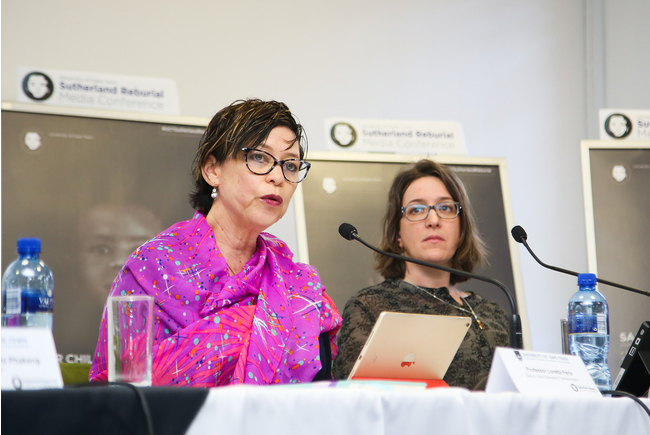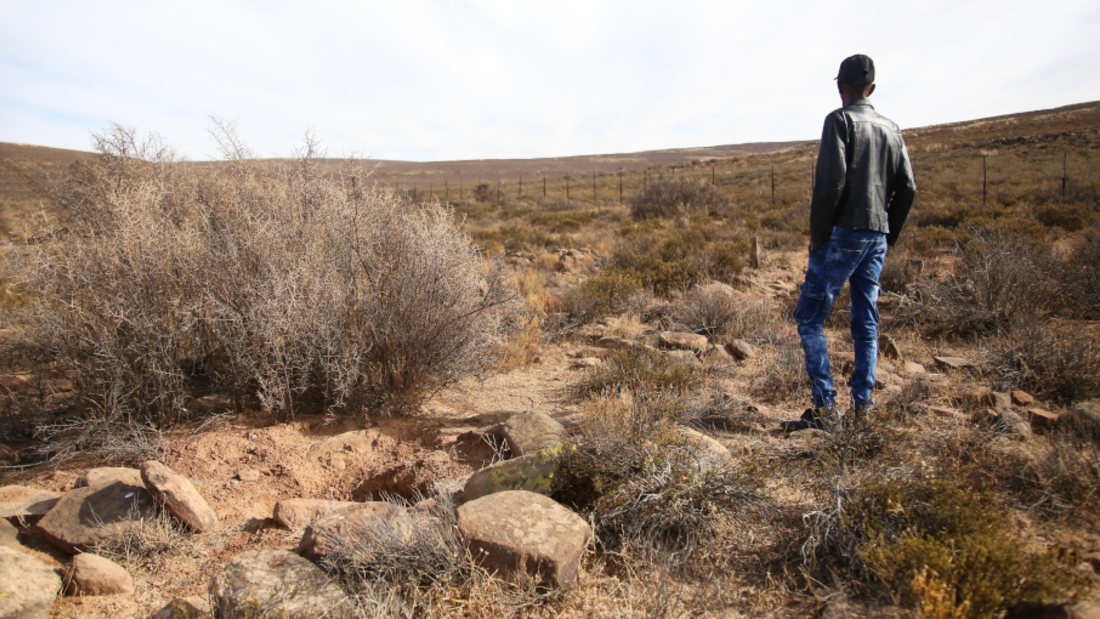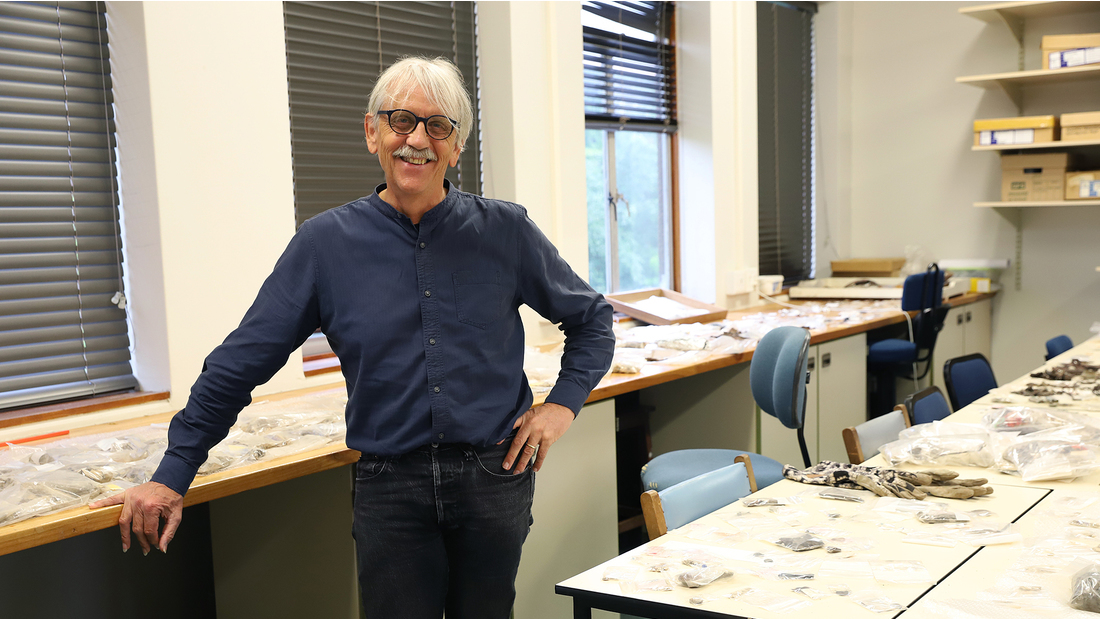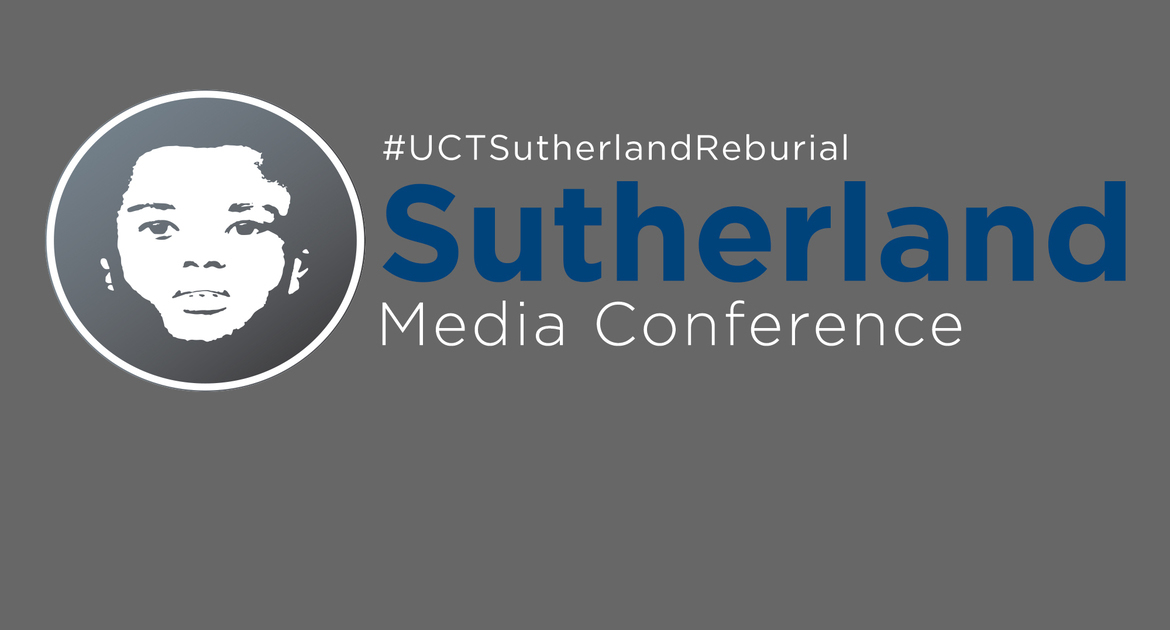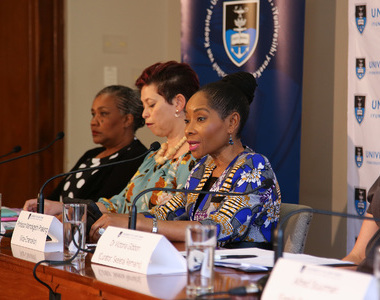Using archaeology to correct injustice
04 November 2019 | Story Carla Bernardo. Read time 8 min.In the early 1920s, on a farm known as Kruisrivier on the Roggeveld escarpment near Sutherland in the Northern Cape, the landowner and his son dug up the skeletal remains of seven individuals, people who had worked the land and who had, considering the era, probably done so under duress and in dire circumstances.
These seven individuals, along with two more discovered in the area but outside of the Kruisrivier farm cemetery, were then donated to the University of Cape Town (UCT) medical school’s skeletal collection by the farmerʼs son, who was a medical student.
Almost a century later, while doing an archiving audit on the records in the skeletal collection, Dr Victoria Gibbon from UCT’s Division of Clinical Anatomy and Biological Anthropology discovered that a gross injustice had taken place: UCT had unethically obtained the skeletal remains of at least nine individuals, all of whom were San or Khoe.
Realising that this situation was totally unacceptable, Gibbon moved quickly to assemble an interdisciplinary and multi-institutional working committee from UCT, the Max-Planck-Gesellschaft (MPG) in Germany and Liverpool John Moores University (LJMU) in the United Kingdom.
While the goal of repatriation, reburial and restorative justice was clear, the committee’s journey would not be an easy one.
To be successful and “make good”, the Kruisrivier working committee would need to locate the burial site, find the disturbed graves, identify the individuals whose remains had been unethically exhumed and donated, and locate any living relatives.
“I think the circumstances under which this took place were ugly and it is a crime. It’s grossly unjust.”
“Grossly unjust”
Emeritus Associate Professor Simon Hall, from UCTʼs Department of Archaeology, rose to the challenge. With Gibbon as the team lead and biological archaeologist, joining Hall on the committee were UCTʼs Professor Nigel Penn from the Department of Historical Studies, Dr Tinashe Mutsvangwa from the Division of Biomedical Engineering and Professor Judith Sealy from the Department of Archaeology; MPGʼs Dr Stephan Schiffels and Joscha Gretzinger; and LJMUʼs Kathryn Smith and Professor Caroline Wilkinson.
“I think the circumstances under which this took place were ugly and it is a crime. It’s grossly unjust,” said Hall, whose research interest is historical archaeology.
This subfield addresses the material and cultural archaeology of the recent past using different kinds of evidence such as written documents and oral histories, in addition to physical and material evidence. The purpose is to enrich perspectives on the lives of ordinary people such as women, slaves and children.
Hall served on the working committee as the archaeologist and was tasked with locating the “scene of the crime” and the burial sites which, by this point, had all but disappeared into the arid farmland.
Fortunately, Hall knew the area well, having conducted projects there with postgraduates over some years.
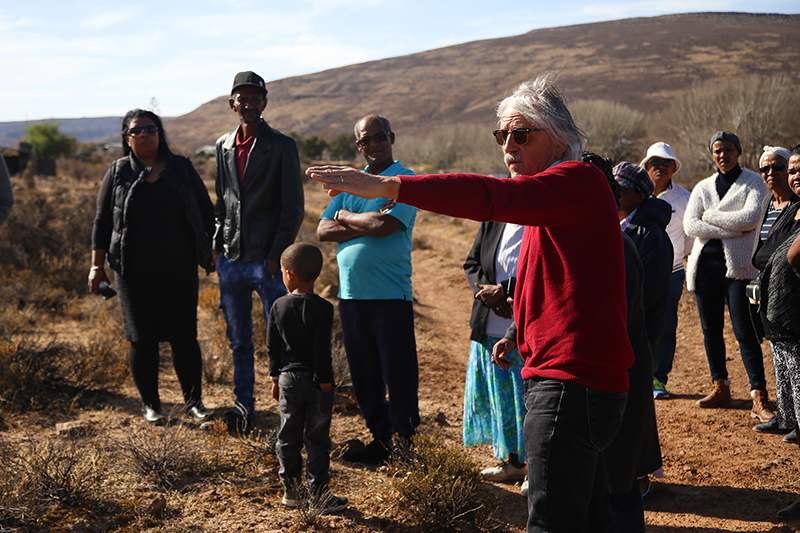
Key findings
Armed with the necessary geographical information, he set off to locate the disturbed graves. The current owner of the property granted access to Hall, Penn and members of the digital mapping research group, the Zamani Project, from UCT’s Geomatics division in the Faculty of Engineering & the Built Environment (EBE).
Having successfully located the Kruisrivier cemetery and using the map they created of all the graves, Hall made a number of key findings.
The first was the different styles of graves. Some were clearly for Christian farm labourers, evident from the headstones and footstones. Then there were graves which featured stones, used to mark the position of the grave and packed in platforms or slightly mounted cairns.
“The assumption was [the latter] was expressive culture of [San and Khoe] belief and value,” said Hall.
This, in turn, revealed what Hall deemed a “really ugly issue” – the graves which were dug up were specially selected and included both Christian and San and Khoe individuals.
“We think what drove [the] specific selection of the bodies to exhume was the farmer knew who those individuals were.”
The landowner must have had the biographical details of the deceased, known who they were and how they ended up at Kruisrivier, as well as the racial classifications used at the time.
“So certain individuals were classified – and this is ugly stuff – as Hottentot or a true Hottentot [and] others were classified as wild bushmen,” said Hall.
“That was the paradigm under which, at that time, skeletons entered medical school collections.”
“This information has all come together to put faces – historical, physical faces, literally [and] figuratively – to these individuals.”
Historical link
Hall’s work also revealed that two of the nine sets of skeletal remains were not dug up from the Kruisrivier cemetery. The working committee discovered that one of the exhumed skeletons was pre-colonial and had been found during excavation for a road cutting in the region.
The other, according to the accession records in the UCT skeletal collection archives, had been buried in the hills on the farm and, Hall assumed, was removed by the landowner’s son.
Running in parallel with Hall’s work was a public participation process for which the first objective was to find a historical link to living relatives. This process was successful and identified Sutherland’s Abraham and Stuurman families as descendants of some of the individuals whose remains were removed from the farm.
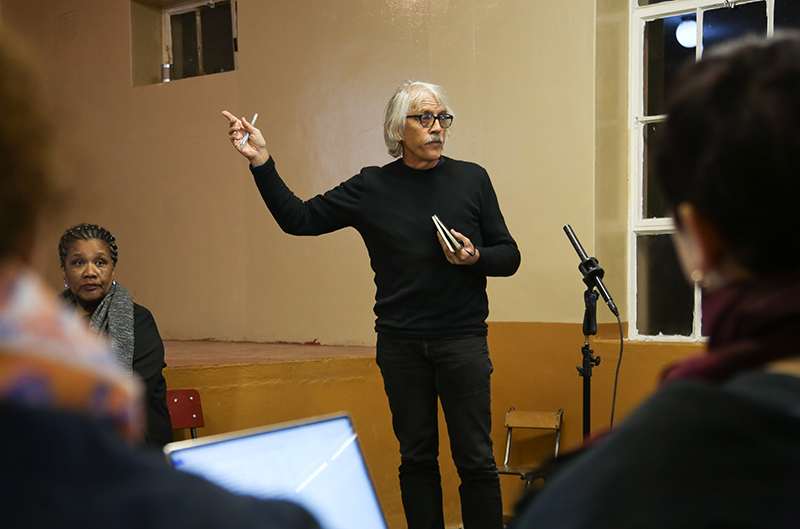
The second part of the public participation process was to repatriate the remains from the UCT collection and take them back to where they belong.
An option for the repatriation was to rebury them at the Kruisrivier farm cemetery. However, the families elected to have their ancestors’ remains reinterred at what is referred to as the old cemetery in Sutherland.
Peace and closure
Hall has nothing but praise and gratitude for the Sutherland families.
“Hopefully, [the project] is a contribution to give those families peace and closure on something that is in their memory but … [which] through this process is given more concrete history, more concrete context ...”
He said he had found the interdisciplinary team and work exhilarating and stimulating because, he said, “it is the right thing to do”.
“This information has all come together to put faces – historical, physical faces, literally [and] figuratively – to these individuals.
“It has been a privilege to be part of this and to make a contribution to getting closure for these people on this.”
 This work is licensed under a Creative Commons Attribution-NoDerivatives 4.0 International License.
This work is licensed under a Creative Commons Attribution-NoDerivatives 4.0 International License.
Please view the republishing articles page for more information.
UCT Sutherland Reburial
After an archiving audit of the UCT Human Skeletal Collection in 2017, the university discovered that it had 11 skeletons in its collection that were unethically obtained by the institution in the 1920s. The university has acknowledged this past injustice, which forms part of its history. Nine of these individuals were brought to the university in the 1920s from Sutherland in the Northern Cape. UCT is working with the community of Sutherland to return the skeletal remains of these nine individuals to their descendants. An interdisciplinary team of academics from UCT and two international partner institutions have conducted unprecedented scientific studies. This process has enabled the university to provide redress and social justice through science.
On 26 November 2023, remains of the nine individuals were reburied in Sutherland. Read the latest news.








